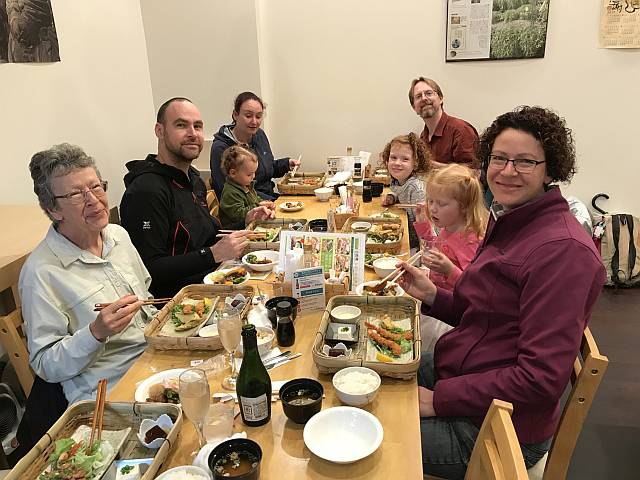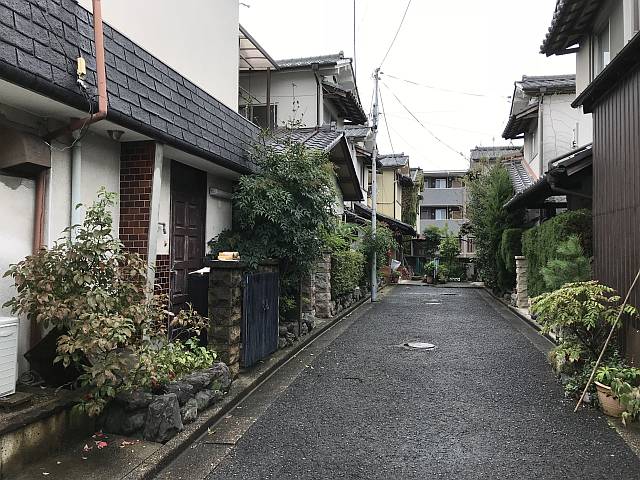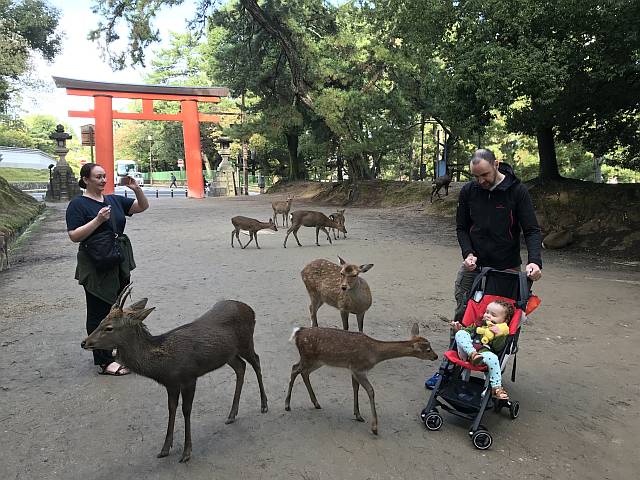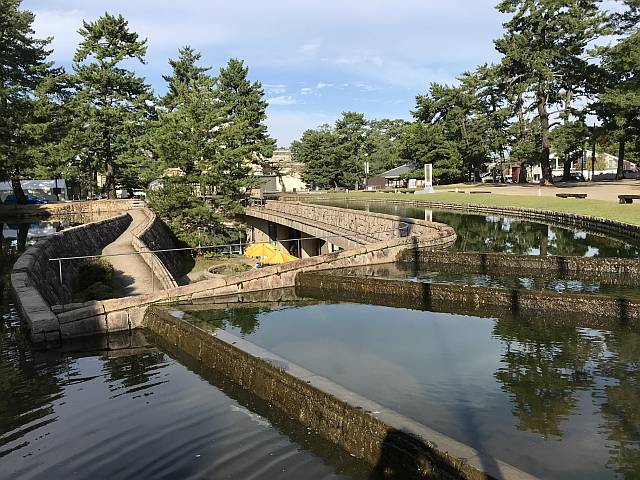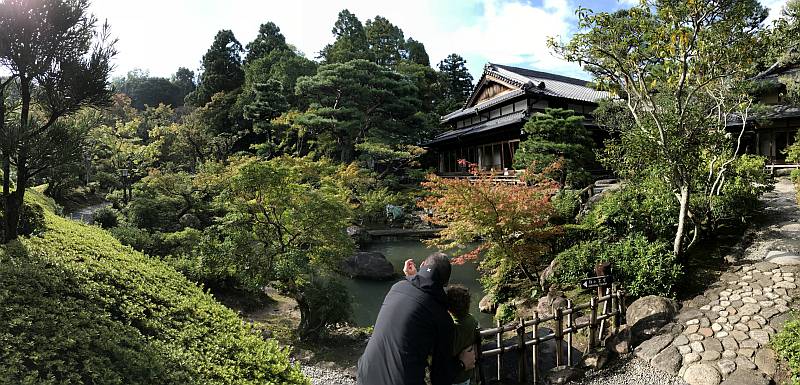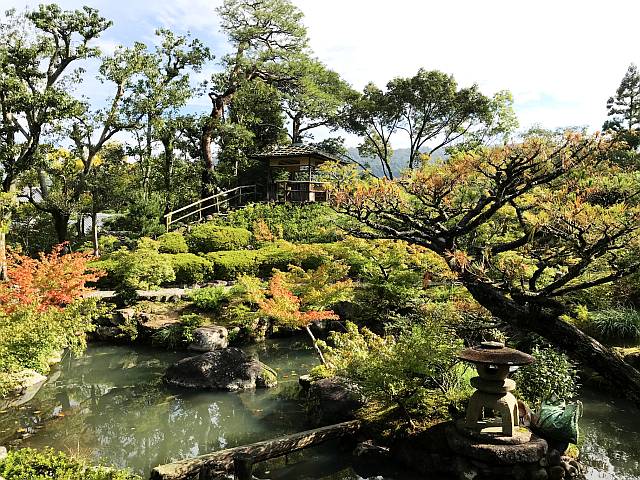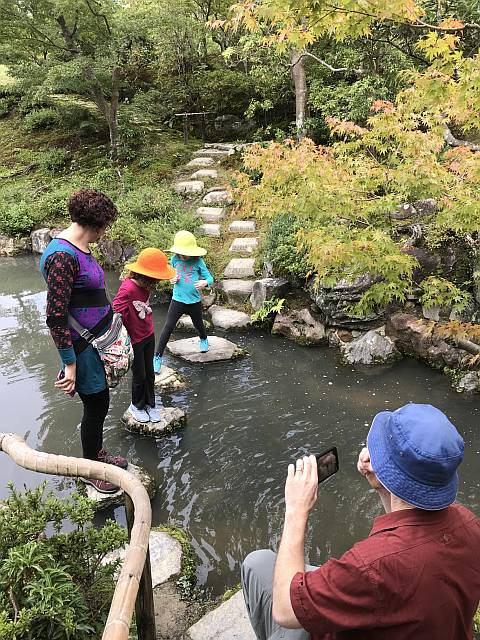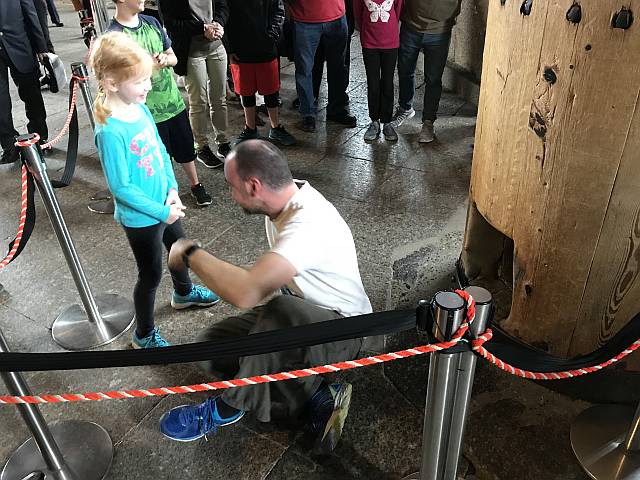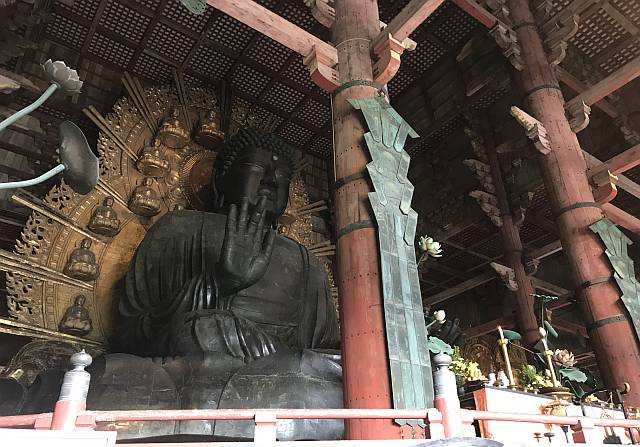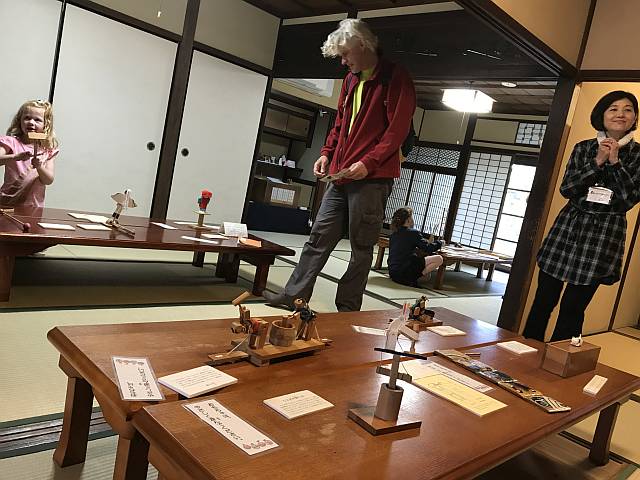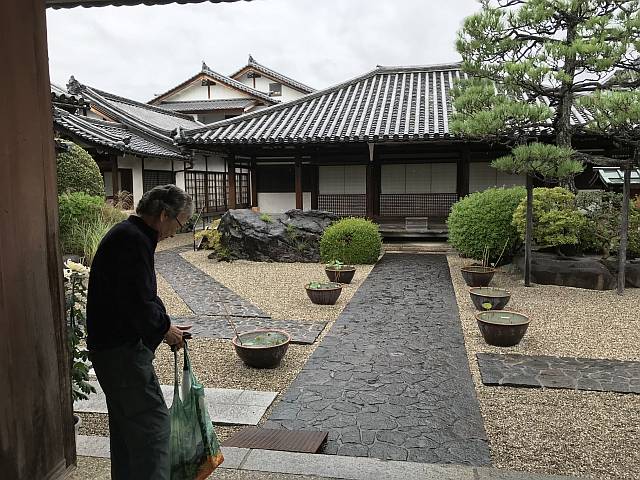We travelled from Kyoto to Nara by
Shinkansen (bullet train) on the morning of 2017/10/17.
After the usual search for a suitable place for lunch (with space to
accommodate nine and a menu that appealed to us) we found this place in the
main Nara railway station.
Had I recorded the name of the restaurant I would have given it here; I
recall that it was a very good lunch for a very reasonable price.
Around the table from the left, Denece, Ken, little Adelaide, Claire, Shayne,
Anna, Beth and Julia.
Photo taken 2017/10/17
The little street on which was the AirBnB house in which we stayed while in
Nara.
The house itself is the one just past the large shrub on the left.
Photo taken 2017/10/17
The house itself.
We were met by the AirBnB host at the railway station, which was about
500m from this house.
The owner was of Bulgarian origin, she kindly took most of our heavier
luggage from the station to the house.
Every house in which we stayed in Japan, except the last one in a village
near Narida which was only one level, were on at least three levels.
Photo taken 2017/10/17
A very Japanese house-front in one of the older parts of Nara.
While there is very little space for plants, there are plants, some in pots,
others creepers, growing from where?
Photo taken 2017/10/18
View of a pagoda from a road that crosses Ara-ike lake.
Denece and I went out for a walk before our kids had their kids ready; one of
the advantages of being grand-parents of kids, rather than parents of kids.
The image has been edited using Photomatix Pro.
Photo taken 2017/10/18
Apart from its gardens Nara is famous for its deer.
Most of them seem to stay in the many parks most of the time, but plainly some
cross some of the busy roads at times.
Have at least some of the deer learned that it is safest to cross the roads on the zebra crossings, or perhaps to cross where and when people cross?
Ken, Claire and toddler Adelaide are on the same crossing.
Photo taken 2017/10/18
Claire, Ken and Addie with the deer in one of Nara's many parks.
This was one of the first contacts that Addie had with the deer; she is
looking a bit wary.
Photo taken 2017/10/18
A very interesting, and, I would think, challenging, bit of landscaping near
Nara National Museum.
Note the sun umbrellas in the lower area.
There was a restaurant there, but it was not yet open at the time I took the
photo.
Had it been open we might have gone in for a coffee.
Photo taken 2017/10/18
There are two excellent traditional Japanese gardens with entrances within
20 metres of each other in Nara.
This photo was taken in Yoshiki-en Garden, which surprisingly has free entry
for non Japanese.
Isui-en Garden was next door and much larger.
Just sufficient autumn colouring to make a more pleasing photo.
I remember remarking to the woman at the gate that if this was not the most
beautiful garden in the world it had to come close!
I'm not at all sure she understood me.
Moss did not seem to such a prominent feature of gardens in Nara as it was in Kyoto and Kanazawa.
Photo taken 2017/10/18
A panorama of Yoshiki-en Garden, Ken and Addie in the foreground.
A masterpiece combination of landscape, plants, pond, paths, paving, little bamboo fence and architecture.
Photo taken 2017/10/18
A view of a small part of Yoshiki-en Garden; note that there is a stone lantern of a different type to many seen in other gardens.
Photo taken 2017/10/18
Another view of a small part of Yoshiki-en Garden, including a tea-house and a bridge.
Photo taken 2017/10/18
A part of the Isui-en Garden, next door to, and much larger than the
Yoshiki-en Garden, above.
My daughter Julia and her family were not with us when we earlier visited Yoshiki-en.
They met us here.
Julia was also getting a photo on her iPhone in this photo.
Photo taken 2017/10/18
Isui-en Garden again.
The pond and buildings are obvious design features; note that the island(?) on the right is covered with grass, while in Kyoto or Kanazawa it might have been covered with moss.
Photo taken 2017/10/18
Julia's family in Isui-en Garden.
From left, Julia, Anna, Beth and Shayne.
Large natural boulders have been used on the right.
It is interesting that while the stepping stones in the foreground seem to be natural stones, those on the far side of the pond appear to be artificially shaped (or cast concrete?)
Photo taken 2017/10/18
This must be the grounds of either Shingon-in or Kangaku-in Temple.
It seemed to me a particularly successful combination of buildings, lawn,
shrubs, trees, rocks and paths.
One wonders how many Japanese must be employed in looking after parks and gardens such as these?, and what a pleasant job!
It was still in the Nara Park area.
Photo taken 2017/10/18
